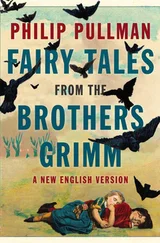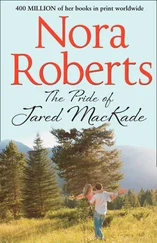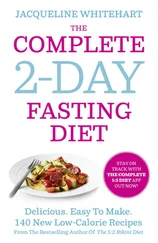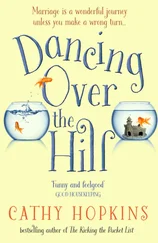Buffalo Milk Yoghurt with Lavender Honey and Pear Salad
There has been an invasion, a friendly one, that has won the hearts and minds of food lovers everywhere. Buffalo roam the English fields – but not the entire countryside, thank goodness. They like to wallow to cool their muscles and, while it is a cute sight to see their ears and nostrils poking above the water in rivers and shallow ponds, it is a terrible job for the herdsmen to winch them out of their happy, wet haven and milk them.
Milking is the best possible use for them. Their meat is almost fatless, which makes it attractive to some, but I’d rather eat native beef with its marbling of fat, and on other days, buffalo yoghurt and cheese. Buffalo milk is a little volatile – it needs to be very fresh when made into yoghurt or fresh cheese, or it will have an overripe flavour that can be off-putting. I am not a milk drinker, so turn it into a rich, creamy, white-as-chalk yoghurt and serve it with flower honey and ripe pears – a healthy breakfast, but I would not be at all ashamed to put it on the table as a hurried pudding after lunch. There’s no need, if you are short of time, to arrange it on plates as in the recipe below. Instead, just let everyone d-i-y. The yoghurt can go, ice cold, into a large earthenware bowl with a ladle, the honey on the table and a bowl of pears.
Buying buffalo milk
Higher Alham Farm, near Shepton Mallet, produces milk, yoghurt and an excellent, not quite authentic, organic buffalo cheese to eat fresh with salads. Its products are available at Pimlico, Notting Hill, Stoke Newington and Archway farmers’ markets in London. Mail order is available for a minimum quantity: www.buffalo-organics.co.uk; tel: 01749 880221.
Buffalo Milk Yoghurt with Lavender Honey and Pear Salad
To make the yoghurt, you will need four 250ml/9fl oz jars, spotlessly clean, and a warm place such as an airing cupboard. Automatic yoghurt makers are available from Lakeland Ltd ( www.lakeland.co.uk; tel: 015394 88100).
You can, of course, buy the yoghurt, or use a good whole dairy milk brand that you are devoted to, but …
Serves 8
1 litre/1¾ pints fresh buffalo milk
4 tablespoons live yoghurt
For the lavender honey and pear salad:
6 Cornice pears, peeled, quartered and sliced
juice of ½ lemon
2 heaped tablespoons lavender honey
a few lavender buds, if available
Warm the milk to boiling point, then leave it to cool to just above blood temperature – about 38°C/100°F. Stir in the live yoghurt and put it into jars. Seal and put in a warm place (about 29°C/84°F) for about 6 hours, until set.
Put the pears into a bowl, squeeze over the lemon juice, then pour over the honey. Gently stir, or turn the pears over so they get a good coating of the honey, which will thin as you do this. Add a little pinch of lavender buds. Eat the yoghurt with the pear salad spooned over.
CAULIFLOWER
Cauliflower with Lancashire Cheese
Leftovers
Crisped Cauliflower with Breadcrumbs and Garlic
Cauliflower Soup
I am an admirer of cauliflower but I am not sure about anyone else. It was astonishing to hear from a farmer, standing with him in a giant cauliflower patch near Preston, that the British are colour sensitive about the vegetable. Unless it is spotlessly white, no one will buy it. On the day of my visit to this mecca of cauli growing, the sun was out and the cauliflowers were swiftly turning yellow. The farmer told me he would grub the whole lot into the ground: it wasn’t just the supermarkets who would be reluctant to buy them, the shoppers wouldn’t touch them.
On that basis, I think we need some recipes for this vegetable that, when fresh, is less sulphurous, less aggressive, more … poetic than a cabbage. Mark Twain was right when he said that a cauliflower is a cabbage with a college education.
Cauliflower with Lancashire Cheese
The cheese sauce for this dish is a basic that you can pour over other leafy vegetables to make a filling supper – try it with Swiss chard, Brussels sprouts, curly kale, spinach, lettuce hearts and beetroot tops.
Serves 4–6
1 large cauliflower, broken into chunks (use the leaves if they look fresh, slicing them into thin strips)
a pinch of ground mace or a few gratings of nutmeg
600ml/1 pint milk
1 bay leaf
40g/1½oz butter
40g/1½oz plain flour
200g/7oz Lancashire cheese, grated
sea salt and freshly ground black pepper
Fill a large pan with water and bring it to the boil. Add a pinch of salt and the cauliflower and boil for about 7 minutes, until just tender but not soft. Meanwhile, put the spice, milk and bay leaf into a small pan and bring to the boil. Pour into a jug and set to one side. Melt the butter in the same pan and add the flour. Mix to a paste and cook over a low heat until the paste has a sandy texture. Gradually whisk in the hot milk (having removed the bay leaf), making sure there are no lumps. Bring the sauce to the boil, stirring all the time. Add the cheese and stir once more, then remove from the heat. Season with salt and pepper.
Put the cauliflower in a shallow ovenproof dish and pour the sauce over the top. Either brown it under the grill or bake for a few minutes in an oven preheated to 240°C/475°F/Gas Mark 9, until browned on top.
 |
Kitchen note |
| You can make this dish without flour, whisking together 5 egg yolks and 600ml/1 pint single cream or crème fraîche. Bring very slowly up to the boil but do not let it bubble. Season with nutmeg, salt and pepper and add the Lancashire cheese. Pour the sauce over the cooked cauliflower and bake to brown the top. The result is more of a rich, baked custard. |
Cauliflower leftovers
Crisped Cauliflower with Breadcrumbs and Garlic
I like to fry previously boiled cauliflower with fresh breadcrumbs in a little oil, with a peeled garlic clove (to be removed later), then eat it with orecchiette, the little ‘ears’ of pasta that so effectively collect the broken, crisp pieces of cauliflower and crumbs. Grate some Parmesan cheese over the top.
Cauliflower Soup
Gently fry a chopped onion in butter or oil, then add the cooked cauliflower. Season with a little English mustard powder, cover with milk and stock (50/50) and bring to the boil. Liquidise and season, then serve hot with a little cream and chopped chives – or my favourite herb, chervil, if you can get it.
Glorious Rehash – A New Generation of Leftovers
Thin, melting slices of rare roast beef, eaten with a mustard dressing tinted with anchovies and capers; cockles in a hotpot of seafood broth, served with a garlic sauce; little cauliflower florets crisped in a pan with breadcrumbs and olive oil; the lightest shrimp shell and straw mushroom broth, made warmer still with needles of fresh ginger; a radiant, creamy squash soup, flavoured with melted, brandy-washed cheese; or perhaps a dish of rice spiked with allspice and green pistachios, cooked in a pan with shards of roast lamb …
A menu that sounds richly indulgent but which is a good deed: in all these dishes there is something that might otherwise have been thrown away. Leftovers – the skeletons, shells, skins and extra flesh of foods deserving of a better future. Landfill that became a tummy full.
If you pay more for the best raw materials, it makes sense to use up every little bit. When a cut of well-hung meat from a slow-reared, grass-fed animal costs between twice and four times as much as one that was reared indoors and forced to grow fast on an unnatural diet, spreading the cost becomes an economic necessity. But this is not the only reason to reduce waste. It is estimated that one-third of the food bought in the UK is thrown away, ending up in landfill where it rots, emitting methane, a major contributing factor to climate change. The value of this food is estimated at £8 billion yearly – sympathy wanes, in certain cases, with complaints about paying more for better food.
Читать дальше













